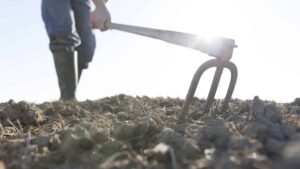Have you ever noticed how most food decisions are made in isolation? Retailers make product commitments based on marketing advice; farmers develop cover crop approaches with old technologies; scientists propose solutions the brands are not interested in; and the European Commission launched a Farm2Fork strategy aiming to phase out most crop protection tools … without consulting farmers.
The final part of this European Seed trilogy reassesses how our food and agriculture systems need to evolve. It started by examining how the term “organic” seemed to mean anything to anyone. Given the environmental stresses of organic food production, the second article looked at an alternative called ‘better farming’ (based on the Better Cotton Initiative). Better Cotton was successful in part because the cotton production chain is fairly integrated and able to coordinate such an initiative. This column will look at the need for similar integration throughout the conventional food chain.
The European Commission’s 2000 White Paper on Food Safety required an integrated approach to risk management. Our food chain should be an integrated web of communication and coordination, from seed researchers to farmers to agronomists to processing, packaging and branding actors to logistics, distribution and retail to consumers. In a perfect world, scientists would coordinate with farmers, processors and brands, retailers would consult up the chain before making decisions and consumers and policymakers would be aware of the complex process that allowed them to enjoy safe, abundant food.
But these messages are not integrated. There is no holistic approach to food chain management. Every actor represents their interest and coordinates only when it is in their interest.
With little coordination or communication among the various actors in the food chain, NGO activists and organic food industry lobbyists can freely impose fear campaigns on consumers and retailers, pressure policymakers and create structural impediments on the rest of the chain. Farmers don’t understand why politicians, activists and consumers are so worked up about a relatively benign herbicide. Scientists are baffled over the rejection of certain seed-breeding techniques.
As consumers grow more isolated from farmers (thinking a harvest is like clicking on Farmville) and policymakers continue to randomly remove agricultural technologies, something is going to give. Without proper communication and coordination among the actors throughout the food chain, without an integrated risk management approach and without shared commitments towards scientific best practices, we are risking significant crop losses, environmental decline, potential famines and global food insecurity.
Can we have a ‘Better Farming Initiative’ if brands and retailers solely seek opportunities in lucrative, niche markets? How will new plant breeding techniques help farmers grow more sustainably when environmental activists and social justice agroecologists demand only traditional agricultural practices? How will trust in food safety strengthen when so many opportunists are making false claims at different, isolated links in the food chain (largely left unanswered)?
It is time for the food chain (from scientists to farmers to brands to retailers) to tighten the links, communicate together, coordinate strategies and promote best practices. Each stakeholder in the chain needs to be aware of how their interests are integrated.
Some tips to integrate the food and agriculture chain:
- Stop allowing food issues to be considered in isolation. Retailers and brands, for example, need to speak up if farmers are denied an important technology.
- Coordinate seamlessly along the chain. Consumers perceive that their food comes directly from the farmer so any disruption in the message will undermine trust.
- Stress how innovation at every link in the chain is essential for sustainable agriculture. Seed breeders, for example, should work with farmers to develop better cover crop species.
- Limit how marketing managers can influence food production and research solutions. The food chain starts with the seed (not the brand).
- Improve the integration process by bringing together the various research communities. Universities need to develop horizontal, inter-faculty study programmes.
A Better Farming Initiative will only come about if there is better coordination and dialogue across the value chain. Retailers will not be able to feed their communities with niche, luxury products. Farmers will not be able to grow abundant yields without agricultural technologies. Researchers will not be able to develop innovative solutions without consumer buy-in. We need to abandon our silos, bust the bubbles and present a clear, shared message.
There is one fully integrated food chain, where each link coordinates with the others, where messages are clearly communicated and where consumers trust the product. This is the organic food chain and as much as their policies are a threat to sustainable agriculture and food security, they are the fastest growing segment in the market.
When the Better Cotton Initiative coordinated their entire value chain, market demand for organic cotton fell substantially. What would happen if the conventional food chain took a similar integrated approach?
Related Articles:
https://european-seed.com/2021/05/towards-a-concept-of-better-farming/
https://european-seed.com/2021/03/defining-organic-50-shades-of-green/












